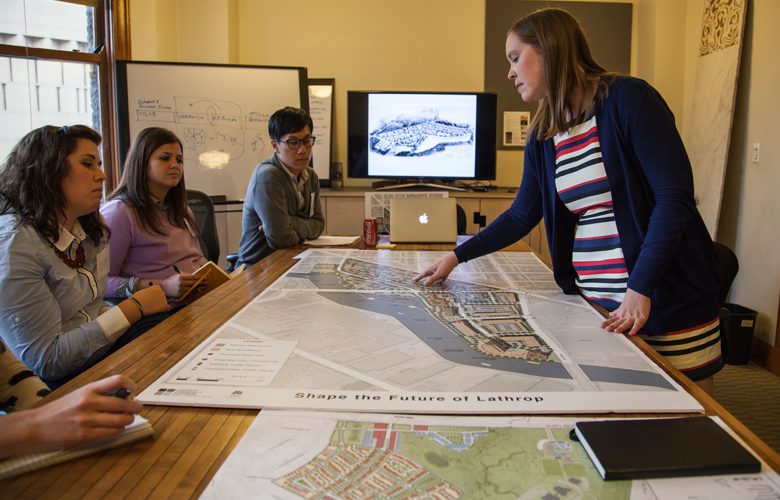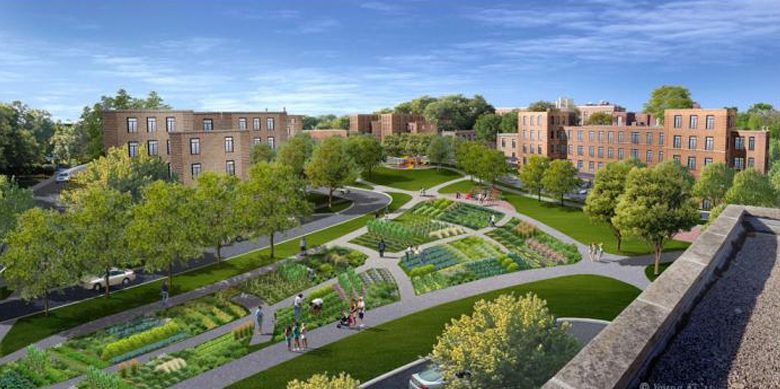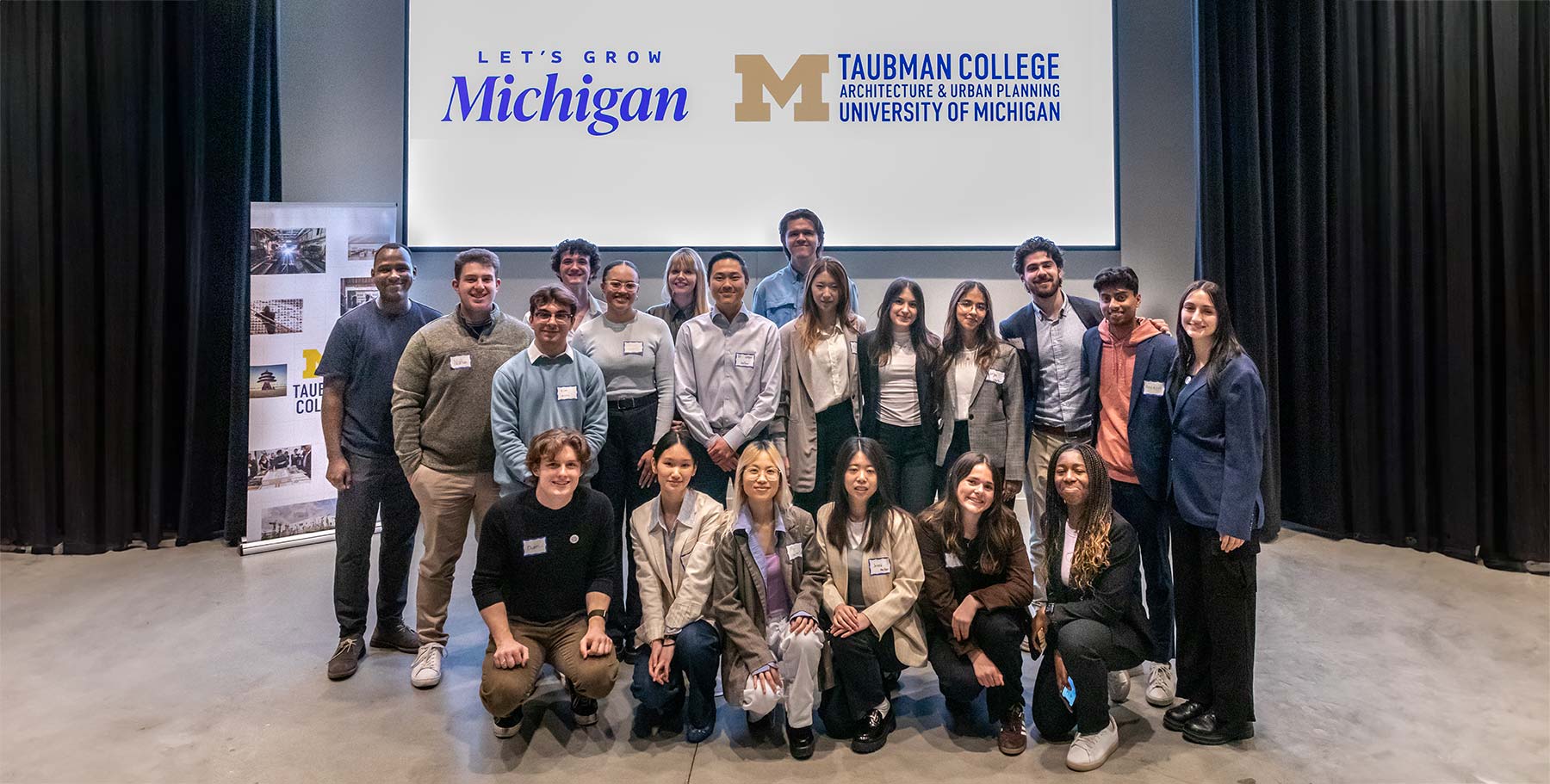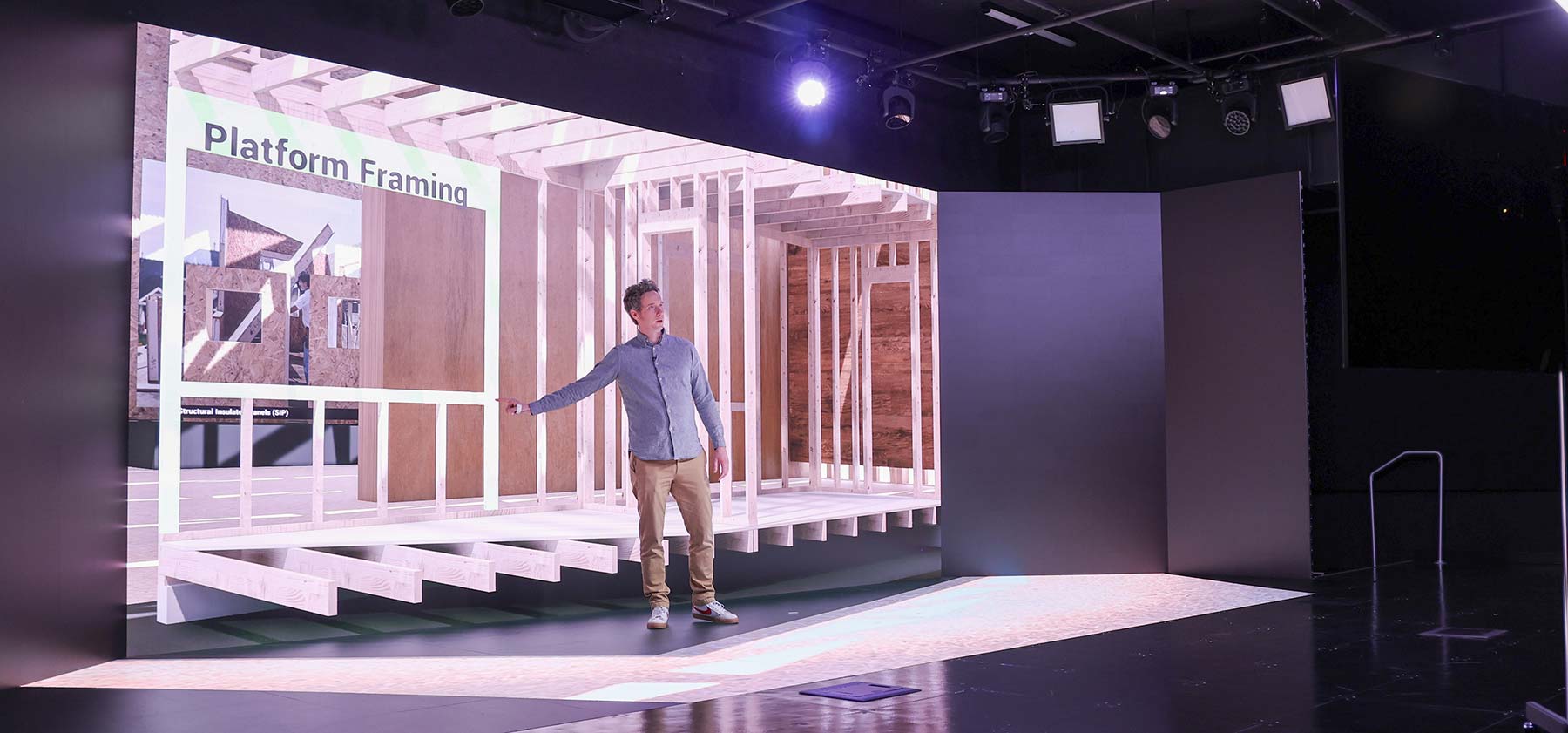Expanded Horizons hits Chicago
Each year the Urban and Regional Planning program at the University of Michigan’s Taubman College of Architecture and Urban Planning selects a city or urban region to visit. The experience, known as Expanded Horizons, is designed to engage Master of Urban Planning (M.U.P.) students with planning professionals, neighborhood associations, urban designers, and even architects in an intensive on-site field study aimed at exposure and understanding of the planning profession.
Insights @ Taubman College: Expanded Horizons from Taubman College on Vimeo.
This year, Expanded Horizons traveled to Chicago for a five-day program featuring visits to large private firms, advocacy groups and non-profits as well as the Chicago Transit Authority.
Skidmore, Owings, & Merrill (SOM), one of the largest and most influential architecture, interior design, engineering, and urban planning firms in the world, was one of the visits. Student’s received a tour of the company’s office and an overview of the firm’s interdisciplinary processes involving urban design and planning. Included in the tour was a review of the Chicago Lakeside Plan where student’s heard first-hand details on the design, implementation, and social implications of the project.

Ten miles from downtown Chicago, the 600-acre Lakeside development will be a new anchor for Chicago’s South Side and a model for sustainable urban living. Image © SOM
Students also visited, Friends of the Parks, an organization focused on ensuring equitable and accessible open space and parkland to all. During this visit, students learned how Friends of the Parks is integrating the Chicago Lakeside Plan into a greater development plan to connect all of Chicago’s lakeside parks. More importantly, students we able to see and discuss how the interests of private firms vs. non-profit firms can differ, and how communication between the two on joint ventures is crucial to ensure a plurality of interests are being met.
Farr Associates, a small but influential planning and architecture firm located in the historic Burnham & Root designed Monadnock Building in the downtown Chicago Loop, was the highlight of the trip.

Students on site visit to Farr Associates. Photo courtesy Adam Smith.
Doug Farr, founder and principal of Farr Associates, who received his undergraduate architecture degree from the University of Michigan, met with students and discussed current urban planning projects. Projects included the Lathrop Homes, a stigmatized public housing project on the banks of the Chicago River that, along with help from the Chicago Housing Authority, will be converted into a mixed-income residential area with several sustainable goals in mind, including LEED and LEED-ND accreditation and re-invigorating the river habitat for local wildlife.

Students walk the Lathrop Homes area on the banks of the Chicago River. Photo courtesy Adam Smith.

Source: http://chicagotonight.wttw.com/2014/02/06/lathrop-homes-redevelopment
Erin Bozarth, a second year M.U.P. added, “The Farr Associates site visit taught us a lot about how messy and lengthy the planning process can be, about community pushback and taking years to find compromise with the public while also completing the tasks for the client. It was a much more practical and blunt look at the profession than the typical stuff we usually get. It was kind of a blow to a lot of people, but I think after processing it all we appreciated his optimism, and I think he lit a fire under all of us to get really good at your job, to the point where you can actually make positive changes.”
In addition to the various site visits, students participated in a service project at the Dunning-Read Conservation Area, a 23-acres of protected woodland and wetland habitat established by the State of Illinois and Friends of the Parks in 2005. Students worked with other volunteers on assorted ecological restoration projects at the site. They assisted in removing invasive species, planting native species, and building trails while learning about how open space and parklands play into the overall land use of greater Chicago.
The service project gave students an opportunity to understand the issues that firms and organizations are trying to tackle in their work, such as hydrology and floodplain management, accessible open space and parks planning, and healthy urban ecosystems.
Alexis Gomez, a first-year M.U.P. added, “The Expanded Horizons trip was a great introduction into planning and initiation as a Masters of Urban Planning student. To get the chance to learn about Chicago directly from planners and to have the opportunity to engage in discussions with them about real planning in the city made for a truly unique experience. I gained some valuable insights about some of the varying roles different kinds of planning organizations can play, but it was also really inspiring to learn so much from my fellow students!”
Since its inception in 1989, Expanded Horizons has traveled to a number of cities in the U.S. and Canada, including Atlanta, Baltimore, Chicago, Cincinnati, Philadelphia, Pittsburgh, and Toronto. Utilizing Michigan’s strong alumni base, Expanded Horizons is a unique opportunity to take an in-depth look at work being done in metropolitan areas all over the country with many of whom participated in Expanded Horizons themselves, being active on many of these projects.




